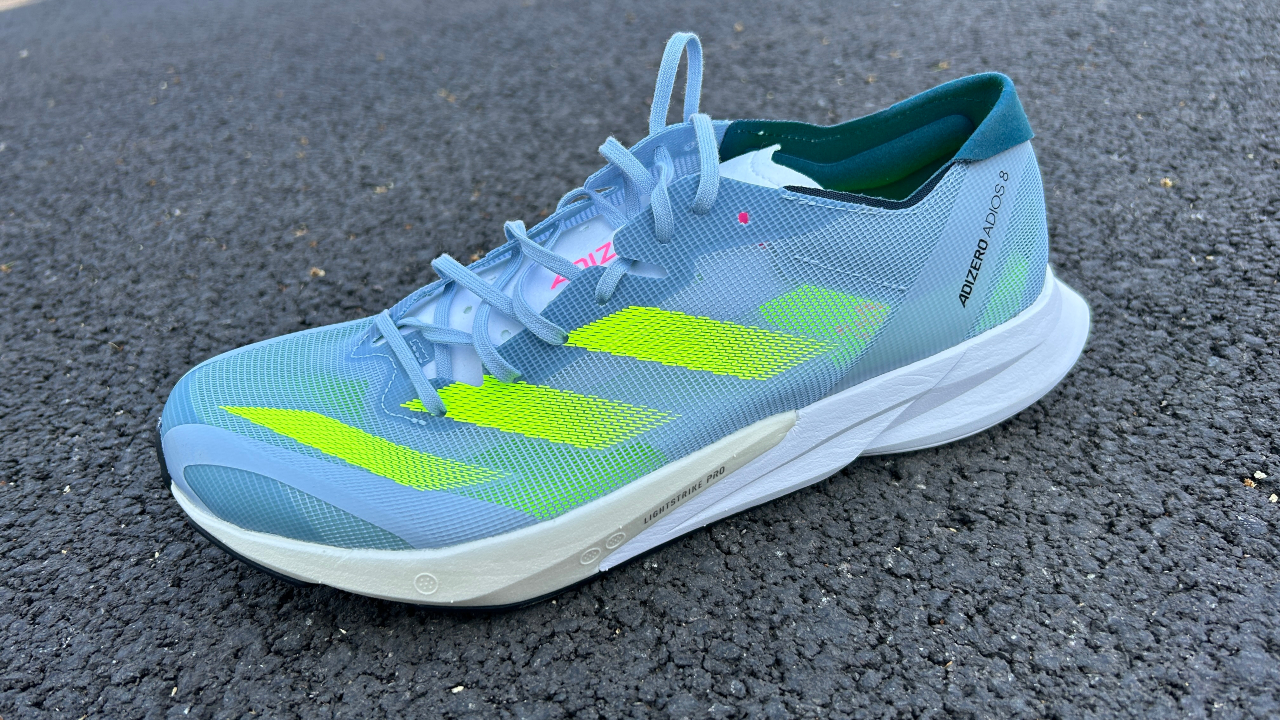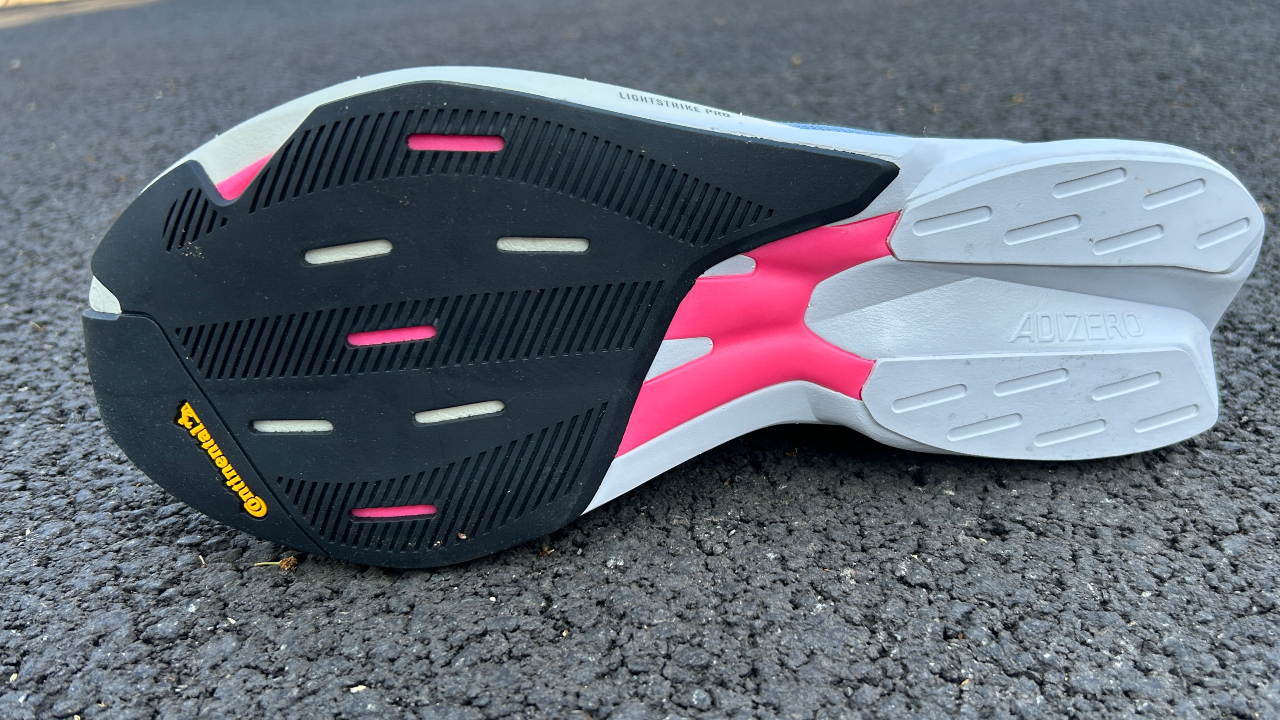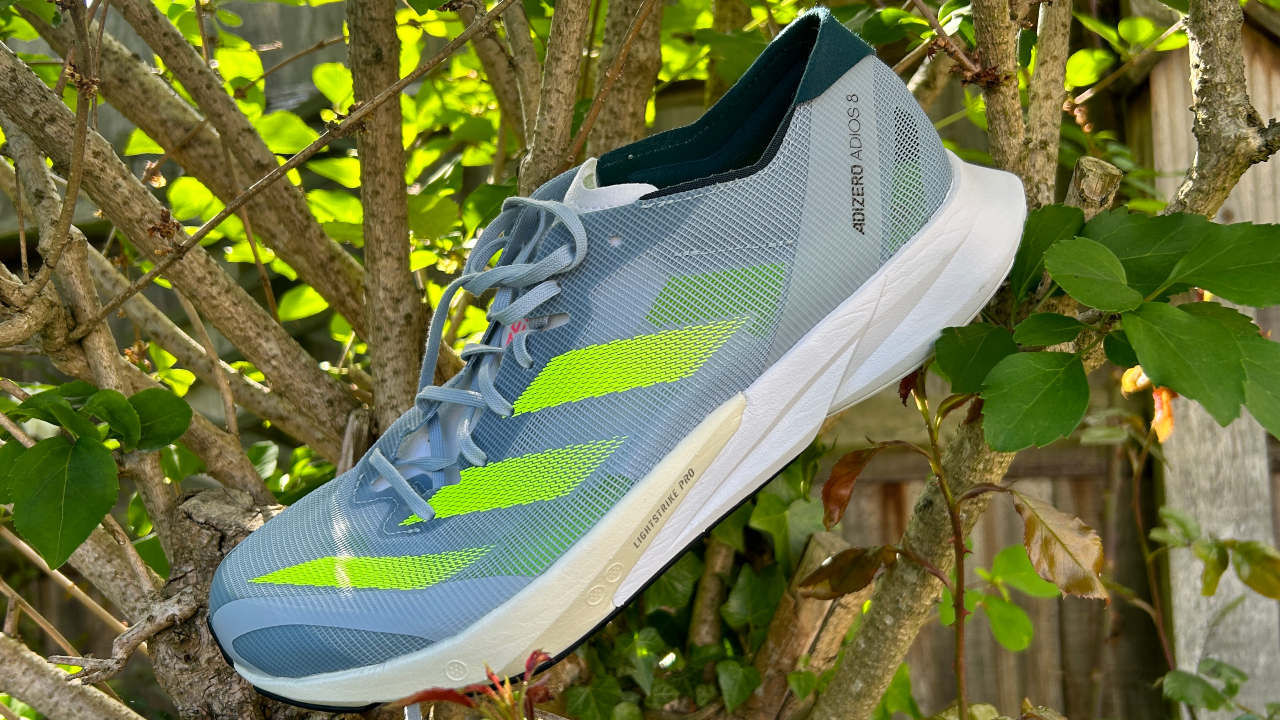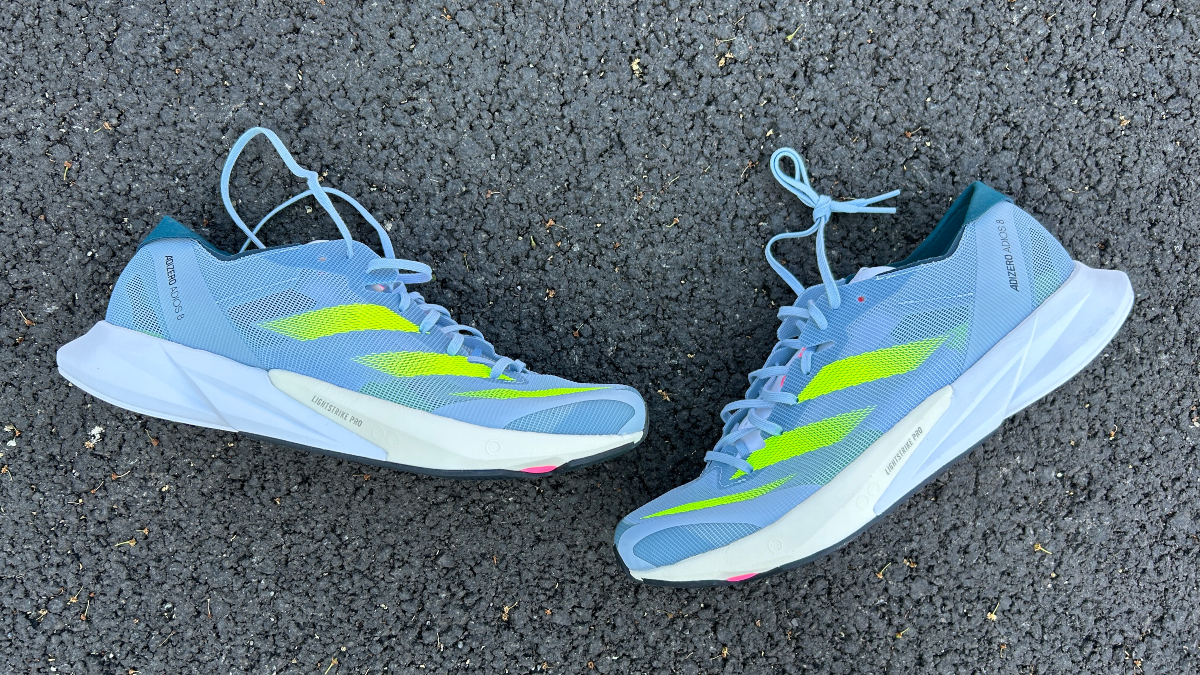Our Verdict
Adidas has made the right call with its changes to the Adios 8, which is a softer, lighter and simply better shoe than the past couple of versions. It might not deliver the performance of shoes with plates, but it’s a good-value and more traditional alternative for your fast training sessions, and the odd race if you don’t use super-shoes.
For
- Light
- Improved midsole foams
- Grips well
- Good value
Against
- Lacks propulsion of a super-shoe
- Doesn’t protect legs as much as others
You can trust Coach
Before the advent of the carbon plate super-shoe, the Adidas Adizero Adios was one of the best running shoes you could get for racing. It was light and responsive, and it had enough cushioning to protect the legs through a marathon while still being minimalist.
Nowadays, the best carbon plate running shoes are the clear pick for racing, and the Adios line includes the Adidas Adizero Adios Pro 3, a high-stack super-shoe. How the original Adios fits into this era has been unclear, but the Adidas Adios 8 shows how a more traditional racing shoe can still be relevant. It’s a great shoe for fast training sessions, and races if you’re not a fan of carbon shoes, and is much cheaper than many rivals.
Adidas Adizero Adios 8 Review: Price And Availability
The Adidas Adios 8 launched in June 2023 and costs $130 in the US and £120 in the UK. That’s affordable compared with the plated shoes that have become de rigueur for fast training and racing, which usually cost more than $150/£150 for plated trainers, and $200/£200 for racing shoes.
Design And Fit

The Adios 8 uses some of Adidas’s best materials and technology, but the difference between it and a super-shoe like the Adios Pro 3 is immediately apparent: It has a much lower stack height. It is 28mm tall at the heel and 20mm at the forefoot for an 8mm drop. The Adios 8 comes in 10mm shorter than most super-shoes, and even plated training shoes like the Saucony Endorphin Speed 3 and Asics Magic Speed 2 that have stacks above 35mm at the heel.
However, Adidas has put the midsole that is there to good use by including two foams. At the heel is Lightstrike 2.0, an updated version of the EVA foam used in the Adios 6 and 7 that’s softer and lighter. In the forefoot is Lightstrike Pro, the bouncy foam used in the Adios Pro 3 and Takumi Sen 8 racing shoes. There’s a deeper wedge of Pro foam in the Adios 8 than on the 6 and 7, which helps to add punch to your toe-off.
The Adios 8 doesn’t use the EnergyRods found in other Adidas shoes to create the propulsive benefits of carbon shoes: It has a plastic shank under the midsole foam that runs from the midfoot forward. This has three prongs—one more than the shank in the Adios 6 and 7—and adds snap to the ride.
Adidas has changed the upper on the Adios 8 compared with its predecessors to be lighter. It’s a mesh material with a few overlays to add structure, but little in the way of support overall as befits a speed shoe. This change, plus the new midsole foam, means the Adios 8 drops in weight to 7.65oz/217g in my US size 9.5, which is 1oz/28g less than the Adios 6 weighed in the same size.

However, the change in upper has created a new fit concern, which is that the heel can rub. It’s similar to the design of the heel on the Adidas Adizero Prime X Strung and Adios Pro 3, which can be a problem for some runners, including myself. Heel-locking the Adios 8 has made it OK for me, though, which wasn’t the case with the Prime X.
The Adios 8 is wider than most Adidas shoes, particularly the Adios line, which has a reputation for being narrow. The shoe fitted well in my normal running shoe size (on length), even though the sizing is a little unusual—in that my UK 9 is a US 9.5, whereas a UK 9 is usually a US 10.
For such a light shoe the Adios 8 has an excellent outsole. It is made from Continental rubber and has good coverage on the forefoot, with large strips of rubber at the heel. As with all the Adidas shoes using Continental rubber outsoles, the Adios 8 grips well in all conditions on the road, even when running at speed.
How I Tested This Shoe
I’ve run just under 30 miles in the Adios 8, using it for a range of workouts including a five-mile tempo run, a hill reps session and a track session. I also used it for an easy run to see how versatile it is as a daily trainer. I didn’t test the Adios 7, but did test the Adios 6 and the old Adios 3, as well as most of the current best Adidas running shoes.
Running Performance
I liked the Adios 6, but if there were two things I’d have changed about the shoe, I’d have made it softer, especially at the heel, and lighter. I’m pleased to see that’s what Adidas has done with the Adios 8. I’ve loved running in it.
The Lightstrike 2.0 foam is softer underfoot as a heelstriker, and the extra Lightstrike Pro in the forefoot gives the ride more bounce. When running a five-mile tempo at around 5min 55sec/mile pace, the Adios 8 was more comfortable and more propulsive than the Adios 6, and more enjoyable as a result.
It also protects the legs better than the Adios 6, though it still doesn’t do as good a job on this front as more cushioned speed shoes. Using the Adios 6 for two workouts in a week took a greater toll on my legs than using a shoe like the Magic Speed 2.

There is an interesting theory that the greater strain of using a racing flat in training leads to more beneficial adaptations to that training, according to the conclusions of a recent pilot study. I still prefer the cushier ride myself, which allows you to bounce back from hard sessions quicker. If you want to really feel the work you’re putting in though, the Adios 8 is great for that, while still being more cushioned than stripped-back shoes.
The lighter, nimble feel of the Adios 8 was perfect for a hill reps session, where it was easier to keep picking feet up as I charged uphill than with bigger shoes that shine more in helping you maintain good paces on flat roads. It’s also more stable than high-stack shoes, and works well for faster runs on mixed terrain as a result of its low profile.
However, the Adios 8 loses out to those shoes in versatility, because I found it too firm for easy running. It’s a shoe I’d only use for speedwork, and even then I’d hesitate to use it for longer sessions because of the relative lack of cushioning, which makes it more niche than shoes like the Endorphin Speed 3 that I’m happy to use for everything.
Is The Adidas Adizero Adios 8 Worth It?

The Adios 8 is a fantastic shoe and one that offers something different to most speedy options available these days. The ride is more comfortable and faster than with previous versions of the shoe, and while it’s not as versatile as some plated training shoes, it is lighter and a lot cheaper, and also has an excellent outsole.
I’d recommend it without hesitation to runners who don’t like the higher stacks and softer foams used in many shoes. Using the Adios 8 in training also highlights the benefits of a carbon super-shoe when you switch to it on race day.
However, if you like high stacks and soft foams in your fast training shoe, then you get a higher level of performance from shoes like the Saucony Endorphin Speed 3, Asics Magic Speed 2 and Puma Deviate Nitro 2, especially over longer hard runs when the plate and extra cushioning tell compared with the lower, firmer Adios 8.

Nick Harris-Fry is a journalist who has been covering health and fitness since 2015. Nick is an avid runner, covering 70-110km a week, which gives him ample opportunity to test a wide range of running shoes and running gear. He is also the chief tester for fitness trackers and running watches, treadmills and exercise bikes, and workout headphones.

